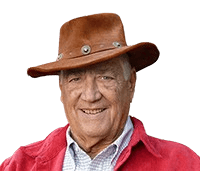Life and achievements
Early life
Waldo Rudolph Tobler was born on November 16, 1930, in Portland, Oregon, to parents of Swiss origin. He was brought up in a traveling fashion due to his father's job in the Swiss consular service. He probably developed this interest in geography when he was young due to his exposure to different cultures and terrains.
The family traveled often, lived in Seattle, Washington, for a while, and then lived in Washington, D.C., where Tobler attended junior high school during World War II. In 1945, after the war, his family moved back to Switzerland, and Tobler went to high school in Zurich. During these years, he became fascinated with maps, spatial configuration, and geographic dynamics that would later define his academic pursuit.
Tobler enlisted in the U.S. Army at 18 to escape the compulsory enlistment in the Swiss military. In the Korean War, he worked as an intelligence analyst and interpreter, fluent in English, French, and German. This strengthened his analytical skills, which he used later in geography. Tobler left the military in 1952 and, utilizing the G.I. Bill, joined the University of British Columbia before transferring to the University of Washington, where he received his B.A., M.A., and Ph.D. in geography. His academic path unfolded when the quantitative revolution in geography occurred, and mathematical models and statistical methods were applied to analyze geographical processes.
Legacy
Waldo Tobler's contribution to geography and GIS has dramatically impacted theoretical and applied geography. He pioneered analytical cartography – a branch that applies mathematical methods to produce better maps with more excellent value. His spatial interpolation, flow mapping, and cartogram work revolutionized how geographic data is depicted with enhanced accuracy and understanding.
Tobler's First Law of Geography—asserting that "everything is related to everything else, but things closer together are more related than things further apart" —remains one of the essential principles in spatial analysis and is relevant in numerous fields ranging from economics to urban planning and environmental science.
Tobler's work was also instrumental in creating GIS, a tool now central to contemporary geography. His initial research on computer cartography paved the way for modern-day digital mapping systems. Tobler completed his Ph.D. in geography at the University of Michigan in 1962. He was a professor there and later at the University of California, Santa Barbara, until his retirement in 2000, where he inspired generations of students and researchers to use GIS as a fundamental approach to geographical research. He has touched more than just academia; the Waldo Tobler GIScience Prize, the Austrian Academy of Sciences gives to those who contribute to geographic information science, and his impact will continue to be felt for many years.
Tobler also contributed to geography through his developments in data display, especially cartograms and flow maps. His work influenced how data is visualized to represent several geographic phenomena still used in demography, transportation, and other fields. One example of his practical work on geographic issues is his hiking function, which simulated walking speeds depending on the surface type. Tobler was honored with many awards, such as the ESRI Lifetime Achievement Award, and his work is still referenced in current geographic research.
Milestone moments
Nov 16, 1930
Birth of a Geographic Pioneer
Waldo Tobler was born to Swiss-American parents in Portland, Oregon, USA.
His father's diplomatic job introduced Tobler to different geographical areas and zones, and he traveled from childhood.
This international upbringing helped Tobler develop a passion for geography, which he would later study and work in.
His early education in Switzerland, after the family moved back to Europe after the war, seemed to have influenced his intellectual development.
Tobler preferred maps, spatial distributions, and geographical changes by the time he joined the university.
These early influences laid the foundation for his later work in geography, which was innovative.
Apr 17, 1961
Doctorate in Geography
Tobler received his Ph.D. in geography from the University of Washington in 1961.
His dissertation, "Map Transformations of Geographic Space," was the basis for his future cartography and spatial analysis research.
While studying at the University of Washington, Tobler participated in the quantitative revolution in geography, which aimed to use mathematical and statistical tools for analyzing geographic data.
This movement would shape his career in the years to come.
His doctoral work laid the foundation for his subsequent developments in GIS and computer cartography by offering new approaches to analyzing geographic information.
Mar 12, 1970
Tobler's First Law of Geography
In 1970, Tobler summarized his findings in what became known as the First Law of Geography: "Everything is related to everything else, but near things are more related than distant things."
This concept was established as the basis for spatial analysis.
The law was introduced in a paper that focused on the growth of cities in Detroit, although its relevance was broader than just urbanism.
It was adopted as a fundamental concept within geographical studies that shaped how spatial relations are defined and dissected.
Tobler's First Law remains applicable and influential today.
It is still quoted in GIS, economics, and regional science.
Aug 14, 1977
Transfer to the University of California, Santa Barbara
The following year, Tobler was appointed to the faculty at the University of California at Santa Barbara, where he remained until his retirement.
At UCSB, he further developed his interest in cartography and spatial analysis, advising many students.
His work at UCSB contributed to the university's growth of geographic information science.
Tobler worked with other famous geographers to turn GIS into an effective tool for spatial analysis.
Tobler's impact at UCSB was not only in the classroom but also in the field of GIS and cartography worldwide.
His contributions are credited with developing contemporary geographic information systems.
